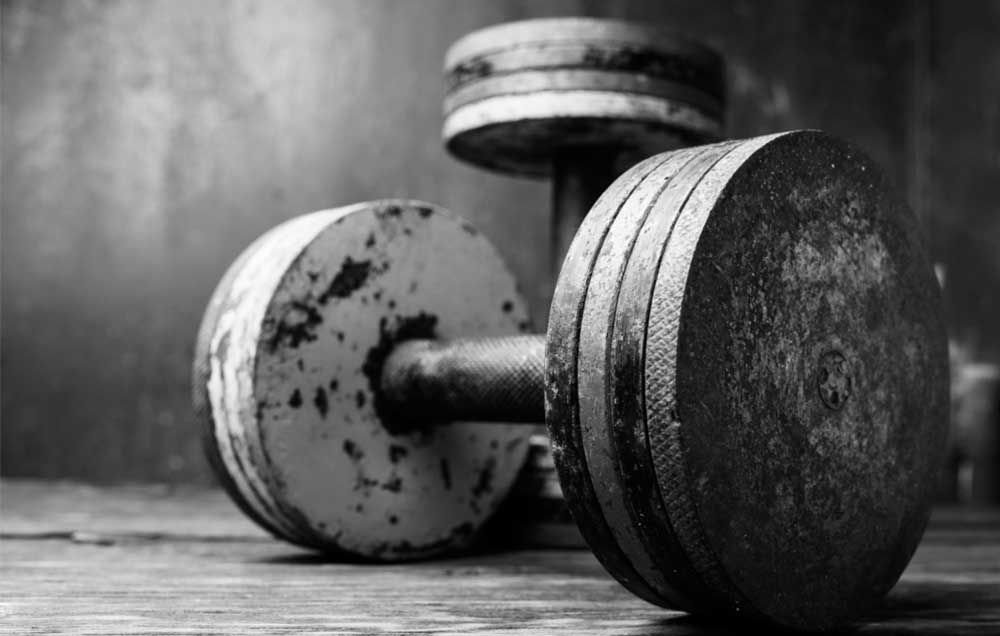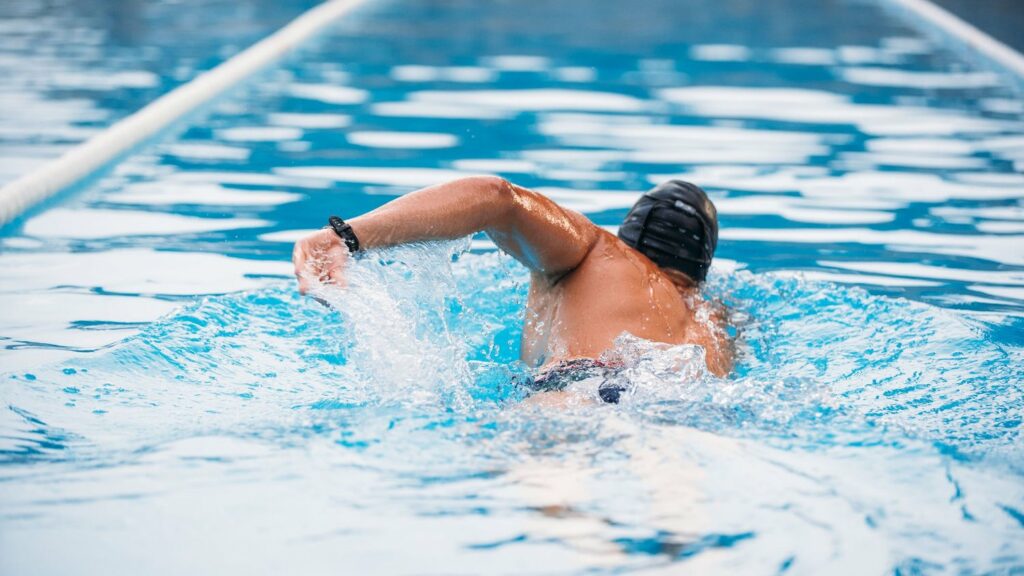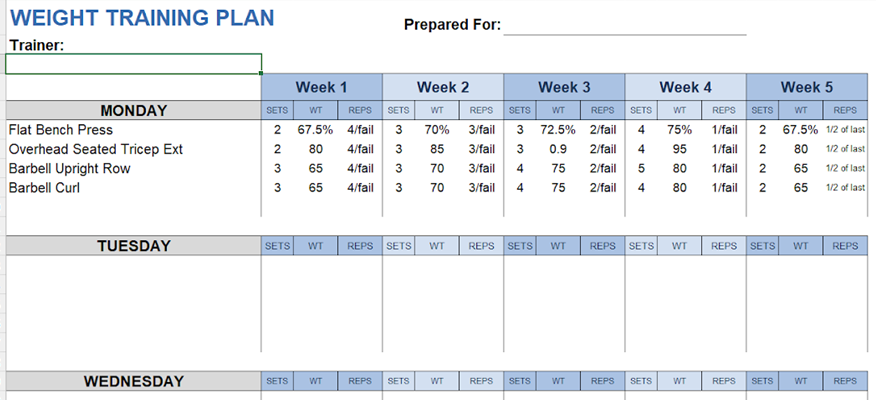Whether you are:
-
Trying to get things back on track post injury,
-
Looking for that extra piece to get the progress in your training,
-
Looking at reducing your chances of further injury,
the correct structure or ‘Programming’ of an exercise programme is important. Programming is the element that separates those performing at high levels and those struggling through the world of sport and fitness. More importantly, it can be the difference between those who repeatedly get niggles or injuries and those that can keep performing what they love at their highest level.
You may be thinking, ‘But I don’t compete!? I’m not lining up against Usain Bolt or playing against Serena Williams. Why do I need to do all this? Well, you may be right, but this doesn’t mean that you’re not competing in life. You compete every day, and for most of us our biggest competitor is ourselves. Your whole life you are competing and training to be the best you can be. So, let’s make life easier and create a plan that not only helps you achieve your goal but also reduces any risk of injury that impedes this progress.

Principles of training
There are 4 principles of training (Periodisation, Overload, Specificity and Individualisation) that you need to know in order to create a programme. The four principles are efficient tools to improve performance and help with the longevity of your training while reducing risk of injury. To understand these 4 principles properly lets have a look at each one individually.

Periodisation
Periodisation is a key component that is easily missed. It is the process of dividing an annual training plan into scheduled training cycles. These cycles move through phases with a particular set of goals.
Typically, periodisation training cycles include
-
Macrocycle – long term of usually a year
-
Mesocycle – medium term of between 4-6 weeks
-
Microcycles – short term which tend to be around a week.
Periodisation is the structuring of the training variables (such as intensity, rest, and volume) to optimise performance. To put simply, it is a program design strategy that includes planned variations within your training schedule. The goal with periodisation is to increase your performance while reducing your risk of injury.
These 3 phases would become a cycle and would be set up like the table

A simple application of periodisation and overload training used to increase strength is that you may want to increase your squat strength during a mesocycle (4-week block).
The 4 week block could be broken up into a mesocycle as below:
-
Week 1: You may squat 50kg, for 8-10 reps x 3 sets
-
Week 2: Increase to 52.5kg for 4-6 reps for 3-4 sets
-
Week 3: increase load to 55kg for 2-4 reps for 3-6 sets.
-
Week 4: Recovery week where load or volume drops. 55kg but do 1 rep for 3 sets.

Overload
Overload is the rule of applying stress to the body slightly over and above that which is normal or you have recently performed. If this increased stress is performed without excess and allowing sufficient time to adapt and recover, your work capacity will increase. There is a fine line between progressive overload and overloading to the point of high stress and possible injury. This is why it is paramount to gradually increase loads to reduce chances of injury, overtraining and for those competing, poor performances.
A simple method to manage load is the ‘10% Rule’. The ‘10% Rule’ suggests working with steady and gradual increases of load between 3-10% each week to help reduce your chances of overloading to the point of detrimental effects on performance or injury. An example of this would be;
A runner with a total of 30km distance per week would only increase by another 3km maximum the next week. Another 3.3km the week after and so on.
Due the ‘10% Rules’ simplistic nature and the complexity of most sports we suggest using this ‘rule’ as more of a guideline. You will still need to think about how intense you are working and the environments in which you are training as they all have a bearing.

Specificity
This is directing your training to the performance and tasks that you want to complete and achieve. Here it is useful to identify the most important components of fitness for your sport or task and tailor your training to improve these components. So if you are a runner you would make sure that you are increasing the load tolerance in your lower limbs to prepare yourself for the loads involved with running. If you cycle you would work on your posterior chain (back musculature, glutes and hamstrings) due to the long duration stuck in the same positions. You wouldn’t go off to the gym pumping away at your chest and arms, as these are not going to help with your sports performance. But they will help for that t-shirt look if that’s what you want.

Individualisation
Everyone is different. This is why your programme must be tailored to you. It needs to take into account your fitness levels, previous training history, diet, recovery… the list can go on. What this means is don’t just use someone else’s plan because it worked for them or use any old thing from the internet. Others have tried this and we have had them turn up to appointments with all sorts of conditions, problems and a lot of questions.
If you’re trying to work out your fitness levels use something simple like your rate of perceived exertion (RPE) to gauge how hard you are working. This is a sliding scale from 0-10 (0 being no effort at all and 10 being your absolute maximum and on the verge of passing out). You want to begin with working at a comfortable yet challenging level of around 6RPE. This is all based on your perception and only you can identify this but it can take a while before you feel confident in gauging your level of RPE.

Rest
You were probably wondering, ‘What about rest!? Don’t worry we did not forget.
Rest days are important. However it is not one of the principles, BUT you need to ensure that you incorporate rest days into your training. Rest days are used to break up your most intense periods/sessions. These would be your high intensity sessions, maximum workout in the gym, HIIT workouts, post competitions / game days, long runs or cycling sessions. These rest days are to allow your body to recover and adapt to the loads that you have just put your body through. It does not matter how fit you are, your body needs these points of rest. Be kind to your body or you could pay the price by decreasing your performance and increasing risk of injury.
Now rest doesn’t mean sitting at home with your feet up for the whole day, parked in the pub watching the footie or rugby for several hours, or a boozy brunch that ends up lunch and pre-dinner fun. Although all these are fun and the odd hour here and there are what we need at times, do not go from running your PB half marathon distance to these or you will suffer the consequences. Rather treat it as ‘active recovery’.
Active recovery involves light based activities aimed at keeping things moving and reduce those feelings of stiffness and tightness and ultimately risk of injury. These activities can be anything from walking to Pilates to swimming. The key is to ensure that you are not pushing yourself too hard.
Below is an example of how to make a simple weekly programme to track your progress. By following the steps and principles in this blog you can aim to be the best you can be.

We are here for you
If you feel you would like to learn more or require further guidance and some specialist advice from our strength and conditioning coach please get in touch by clicking HERE to email or CALL us on 07900603617.
If you are looking for a diagnosis, remember we are always here to help you.





